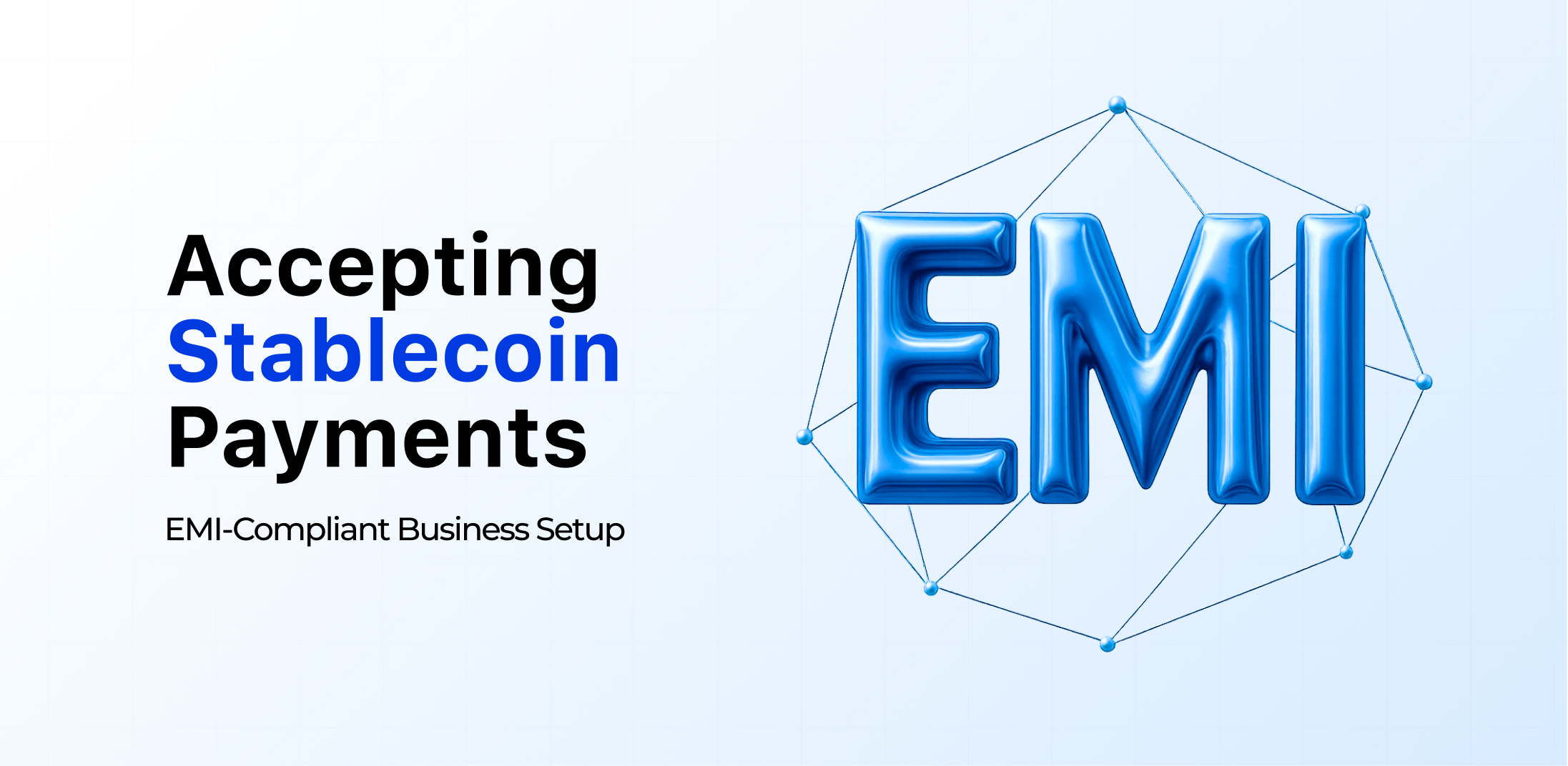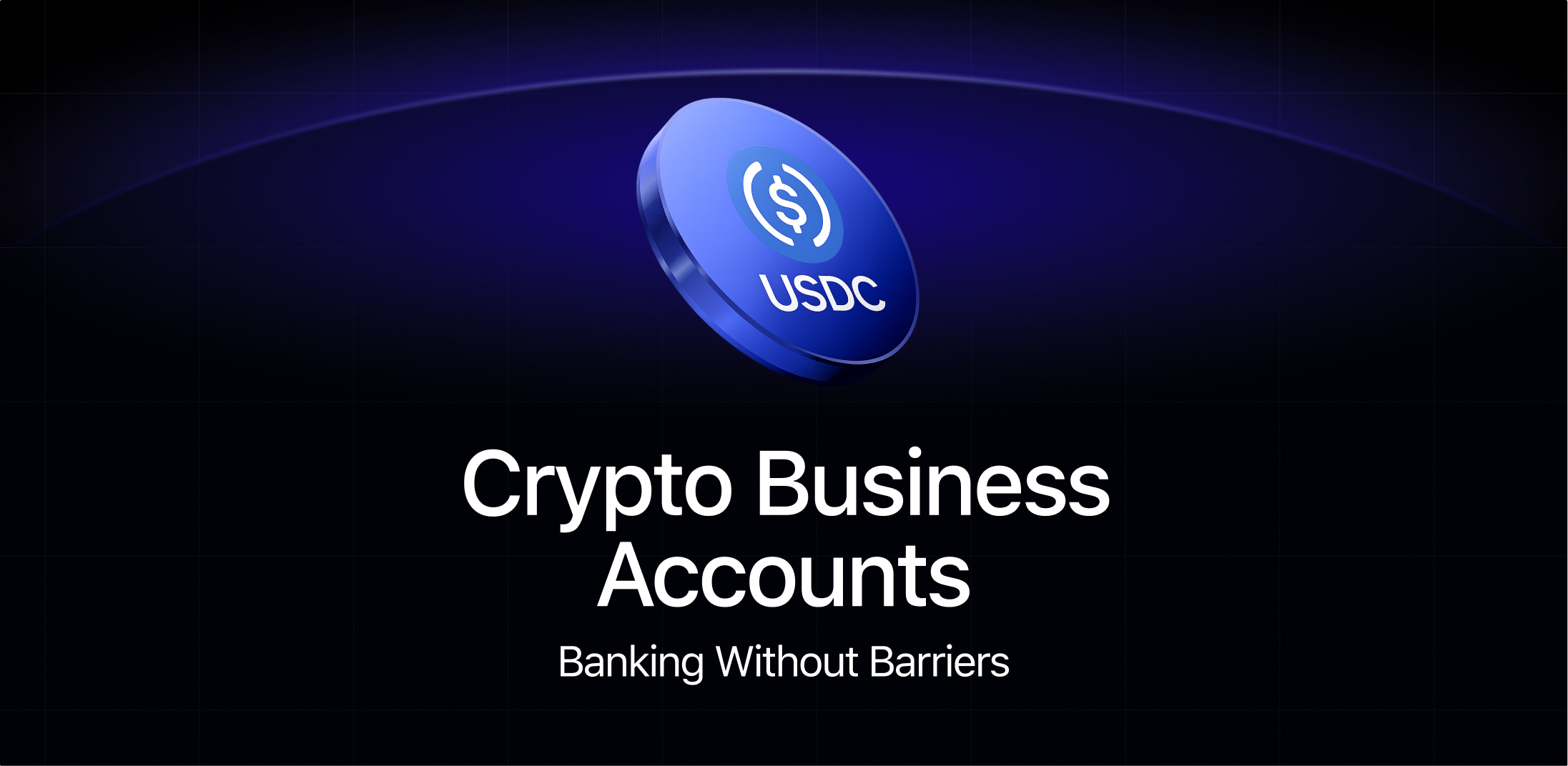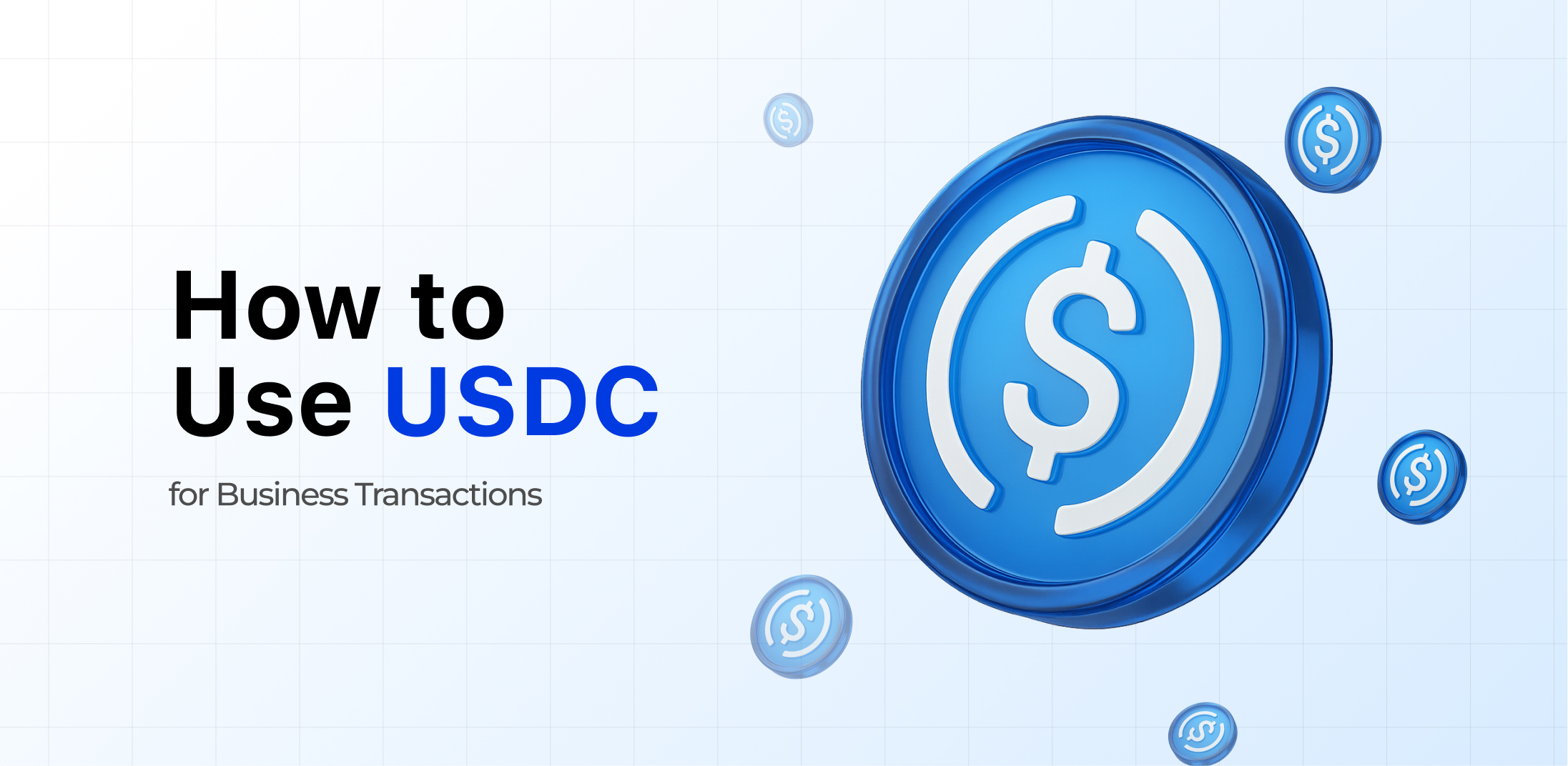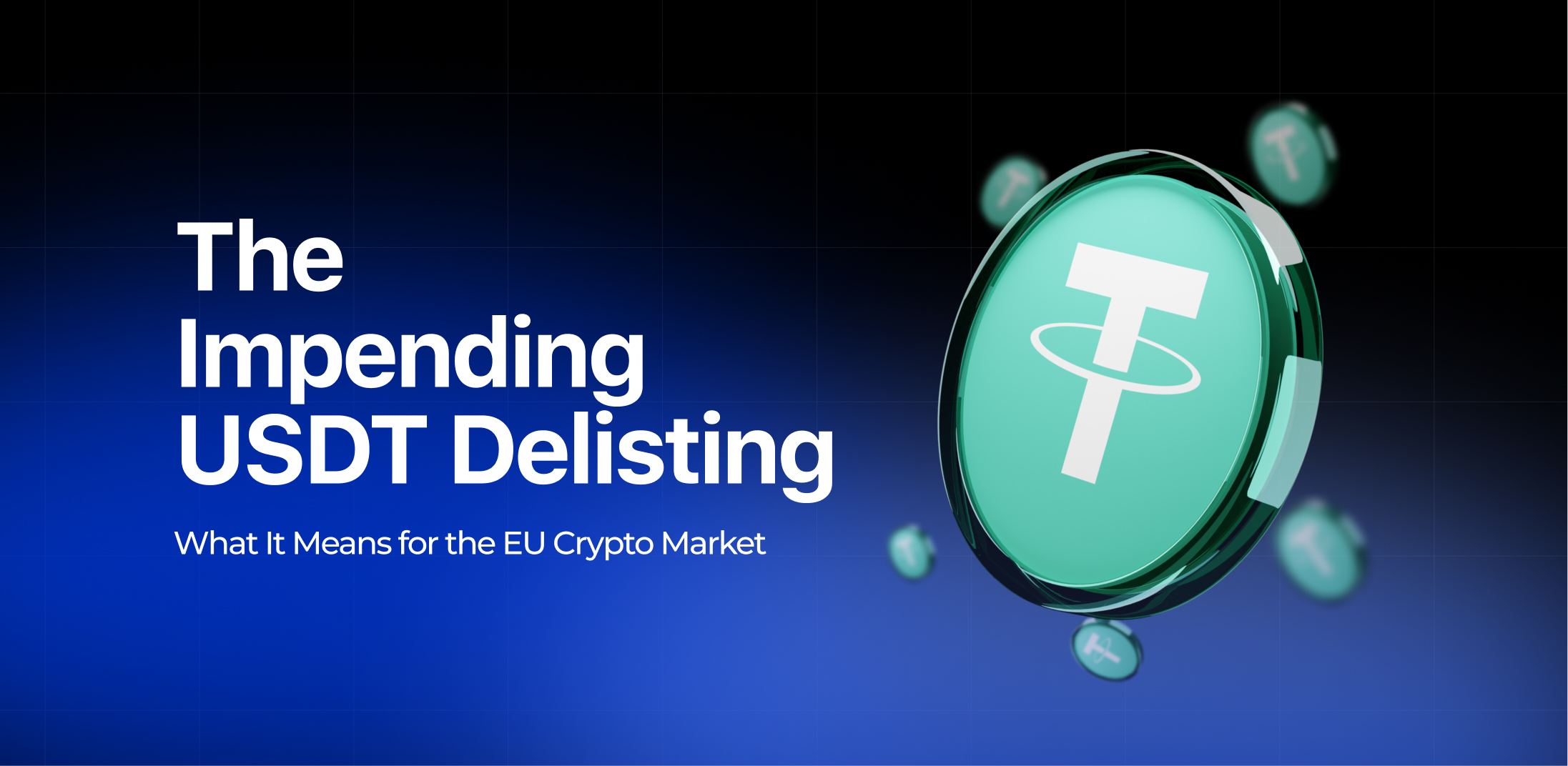As digital finance continues to reshape the global economy, stablecoins have positioned themselves as a powerful link between the innovation of cryptocurrencies and the reliability of traditional fiat money. Backed by stable assets like the U.S. dollar, tokens such as USDC are becoming increasingly popular for their ability to enable fast, borderless, and cost-efficient transactions.
For businesses, this means they can leverage stablecoin payments – Crypto Integration without being exposed to the volatility that once made digital assets impractical for payments. Across the United States, a growing number of businesses, from SaaS companies to global e-commerce brands, are turning to stablecoin payments to streamline international transactions, reach wider audiences, and reduce operational friction. But with this shift comes a need for robust compliance mechanisms that satisfy U.S. regulatory standards at both federal and state levels.
That’s where Electronic Money Institutions (EMIs) become essential. Though rooted in European financial regulation, the EMI model provides a clear and secure framework for managing digital funds, offering businesses a compliant way to incorporate stablecoins into their operations. In the following article, we’ll outline how American companies can build an EMI-compliant business setup to tap into the potential of stablecoin adoption—balancing innovation with compliance in a rapidly evolving payments landscape.
Understanding Stablecoins
Stablecoins are a type of digital currency created to preserve a steady value by linking their price to tangible assets like fiat money, commodities, or other crypto tokens. In contrast to highly volatile cryptocurrencies such as Bitcoin or Ethereum, stablecoins provide consistency and reliability, making them especially well-suited for everyday payments and business-related financial activities.
Types of Stablecoins
Stablecoins fall into three primary categories, each utilizing a different approach to maintain price consistency:
- Fiat-Pegged Stablecoins. These are supported by reserves of fiat currencies, typically held in bank accounts. For instance, USDC (USD Coin) and USDT (Tether) are two of the most trusted and widely adopted stablecoins in the U.S., especially for B2B and B2C stablecoin payments.
- Algorithmic Stablecoins. Rather than being backed by assets, these use algorithms and smart contracts to regulate supply and demand. Though technologically advanced, they have proven less stable and are generally avoided for large-scale business operations due to past collapses.
- Commodity-Backed Stablecoins. These digital assets are linked to the value of physical commodities like gold or oil. While they’re not as prevalent in mainstream payment processing, they appeal to businesses seeking protection against inflation in fiat markets.
Business Advantages of Stablecoin Payments
Embracing stablecoins offers multiple benefits for companies navigating today’s global digital economy:
- Rapid settlement. Transactions are processed in near real-time, avoiding delays typical of traditional banking systems.
- Lower fees. Ideal for frequent transactions and international payments, reducing intermediary costs.
- International scalability. Companies can transact globally without worrying about foreign exchange hurdles.
- Price stability. Compared to volatile cryptocurrencies, stablecoins maintain predictable value, supporting long-term planning.
Most Common Stablecoins Among Businesses
Among international enterprises, USDC stands out thanks to its transparency, regulatory alignment, and ease of use. Many companies have established USDC business accounts to handle crypto payments securely and compliantly.
What Is EMI Compliance?

As digital finance continues to advance, an Electronic Money Institution (EMI) refers to a regulated entity licensed to issue and manage electronic money. Unlike traditional banks, EMIs focus on providing services such as digital wallets, payment processing, and international money transfers, without engaging in deposit-taking or lending. Their tech-driven infrastructure and streamlined operations make them a popular choice for businesses dealing with stablecoins and cryptocurrency-related transactions.
EMIs vs. Traditional Banks
Traditional banks deliver a broad suite of financial services including credit, savings, and investment products. In contrast, Electronic Money Institutions (EMIs) focus exclusively on modern digital payment solutions. EMIs are prohibited from issuing loans, which enables them to concentrate on areas such as digital wallets, transaction processing, and the secure management of electronic money. Operating under strict yet more flexible regulations than banks, EMIs emphasize transparency and consumer protection in all aspects of service delivery.
Licensing Framework: Europe and the U.S.
Across the European Union, EMIs are licensed under the E-Money Directive, allowing them to function seamlessly across all member countries through a single regulatory system. These licenses are foundational for companies managing USDC EMI accounts or providing stablecoin-powered services, offering the legal clarity needed to issue and manage digital currency compliantly.
The United States follows a different model. Rather than a centralized EMI license, U.S. businesses must apply for Money Transmitter Licenses (MTLs) in each state they plan to operate in. This fragmented system introduces additional legal complexity—especially for companies engaged in crypto settlement or stablecoin transactions at scale.
Essential Aspects of EMI Compliance
To maintain trust and regulatory approval, EMIs are required to follow a comprehensive compliance framework, including:
- AML/KYC Measures. Institutions must enforce thorough Anti-Money Laundering (AML) and Know Your Customer (KYC) checks to verify users, detect suspicious activity, and comply with global financial crime prevention laws.
- Fund Safeguarding. Client funds must be kept separate from corporate funds, typically held in secured, reputable banking institutions to ensure their availability at all times.
- Capital Adequacy. EMIs must retain a specified minimum amount of capital, relative to the volume of transactions they process, to guarantee solvency and customer fund protection.
Connecting Crypto and Fiat Through Compliance
EMIs serve as a critical compliance gateway between the blockchain and traditional financial ecosystems. They make it possible for businesses to convert USDC and other stablecoins into fiat currencies, or vice versa, efficiently and lawfully. By enabling seamless crypto settlement within regulated frameworks, EMIs bridge the gap between digital innovation and financial oversight, helping companies integrate blockchain technologies without regulatory risk.
Regulatory Landscape in the U.S.

The regulatory framework for stablecoins and digital assets in the United States is complex and constantly evolving. It is influenced by a patchwork of federal and state authorities, each asserting different mandates. For companies involved in crypto payments, understanding and navigating this multifaceted environment is essential to ensure compliance and support sustainable business growth.
Key Regulatory Authorities
Multiple federal and state agencies oversee the regulation of digital assets in the U.S.:
- FinCEN (Financial Crimes Enforcement Network): Responsible for enforcing Anti-Money Laundering (AML) and Know Your Customer (KYC) regulations. Entities involved in processing stablecoin transactions often fall under the category of “money services businesses” (MSBs) and must register with FinCEN.
- SEC (Securities and Exchange Commission): Focuses on determining whether digital assets qualify as securities. Although most stablecoins are generally not classified as securities, the SEC continues to monitor those with features that resemble investment products, such as yield generation.
- CFTC (Commodity Futures Trading Commission): Oversees commodities markets and considers many stablecoins—like USDT and USDC—commodities when used for transactional or settlement purposes.
- State Regulators: Each U.S. state can enforce its own licensing and regulatory standards, requiring businesses to navigate a diverse patchwork of compliance obligations.
Licensing Obligations for Stablecoin Payment Providers
Companies facilitating stablecoin payment services in the U.S. usually must secure:
- Money Transmitter Licenses (MTLs): These licenses are mandatory in most states for businesses involved in transferring or exchanging fiat and digital currencies. The application process varies significantly across states and can be challenging.
- NYDFS BitLicense: In New York, entities engaged in virtual currency activities must obtain the BitLicense issued by the New York Department of Financial Services (NYDFS). This license is among the most rigorous and detailed crypto regulatory frameworks nationwide.
Legal Treatment of Stablecoins: SEC vs. CFTC
The classification of stablecoins remains unsettled. The SEC may categorize some stablecoins as securities, especially those that provide returns or share investment characteristics. Conversely, the CFTC typically treats stablecoins as commodities when used solely for payments or settlements. This dual regulatory perspective can lead to overlapping compliance requirements and uncertainty for companies operating in the stablecoin space.
How to Accept Stablecoin Payments: A Step-by-Step EMI-Compliant Business Setup
Launching a business that accepts stablecoin payments demands a well-orchestrated alignment of legal, technical, and operational strategies. To ensure regulatory readiness, especially in the context of EMI (Electronic Money Institution) standards, here’s a comprehensive guide for building a compliant and efficient stablecoin payment system.
Structuring Your Business with Regulatory Readiness
- Incorporate the Right Legal Entity: Select an appropriate business structure, like an LLC or C-Corp, that supports financial activities and aligns with licensing and taxation frameworks.
- Choose a Crypto-Friendly State: Establish your company in states known for progressive digital asset laws, such as Wyoming or Delaware. These jurisdictions often streamline the process of obtaining money service licenses or partnering with EMIs.
- Leverage EMI Partnerships: If applying for an EMI license isn’t feasible, collaborate with already-licensed EMIs to process stablecoin payments under their regulatory umbrella.
Secure EMI-Aligned Banking and Custody Solutions
- Partner with Crypto-Supportive Banks and EMIs. Build banking relationships that enable both fiat and stablecoin transactions. EMIs are required to hold safeguarded funds, offering enhanced protection and transparency for your users.
- Choose the Right Custodial Approach. Decide whether to use custodial wallets via licensed providers or opt for non-custodial models, balancing control, security, and compliance responsibilities.
Develop a Stablecoin Payment System with EMI Oversight
- Use EMI-Compliant Payment Providers. Implement payment gateways such as Circle, BitPay, or Coinbase Commerce that are designed for regulatory compliance and support multiple stablecoin rails.
- Connect to All Sales Channels. Integrate stablecoin payment options into your website, POS systems, and invoicing tools to streamline customer payments across platforms.
- Enable Real-Time Monitoring. Adopt compliance software that detects suspicious activities and helps meet AML standards required under EMI regulations.
Ensure Robust Regulatory Compliance from Day One
- Design AML/KYC Protocols: Build secure customer onboarding flows that verify identities in line with EMI and FinCEN guidelines.
- Implement Transaction Surveillance: Continuously scan transactions to identify and flag irregular behavior or links to sanctioned addresses.
- Maintain Accurate Reporting Practices: Keep detailed transaction logs and reporting systems to satisfy audits and regulatory disclosures.
- Consider Hiring a Compliance Lead: Whether in-house or outsourced, having an expert ensures your compliance strategy evolves with regulation.
Best Practices for Secure, Compliant Stablecoin Acceptance

As stablecoin payments become an increasingly popular option among modern businesses, establishing a secure and regulation-aligned infrastructure is more important than ever. Ensuring safety, maintaining compliance, and preserving customer trust are foundational pillars for long-term success. Below are key strategies companies should adopt when incorporating stablecoins into their payment architecture:
Smart Management of Hot and Cold Wallets
Effective digital asset security hinges on a dual-wallet system. Hot wallets, connected to the internet, offer quick liquidity for routine transactions but are more susceptible to cyber threats. To reduce exposure, only operational funds should be stored in hot wallets. Meanwhile, cold wallets—offline and insulated from online attacks—are ideal for securing bulk reserves and client funds. A balanced use of both ensures both accessibility and robust protection.
Prioritize Trusted Fiat-Pegged Stablecoins
To ensure reliability and regulatory compatibility, businesses should rely on well-established, fiat-collateralized stablecoins such as USDC. These are regularly audited, fully backed by cash or cash equivalents, and widely adopted by institutional players. Avoid newer or algorithmic stablecoins, which often lack transparency and have historically been prone to instability.
Leverage Blockchain Intelligence Tools
Risk management in crypto payment systems goes beyond wallet security. By deploying blockchain analytics platforms—such as Elliptic, TRM Labs, or Chainalysis—companies can monitor transactions in real-time, trace suspicious flows, and detect compliance risks. These tools are essential for meeting modern AML and sanctions screening requirements.
Perform Routine Compliance Reviews
Given the fast-changing legal landscape, routine compliance assessments are crucial. Companies should review AML/KYC protocols, update monitoring systems, and validate that their policies align with current regulatory obligations. Keeping accurate transaction records and audit trails is vital for accountability and transparency.
Work with EMI-Compliant Partners
Finally, partnering with experienced providers like PaySaxas can simplify and de-risk the journey to stablecoin adoption. These partners offer solutions that are aligned with EMI regulations, support licensing needs, and provide the infrastructure needed for compliant fiat-to-crypto flows.
By applying these best practices, businesses can safely scale their stablecoin operations—protecting customer assets, meeting compliance demands, and confidently participating in the evolving world of digital payments.
Real-World Examples of EMI-Compliant Stablecoin Use in Practice
Across industries, forward-thinking companies are leveraging EMI-compliant infrastructure to integrate stablecoin payments into their operations securely and efficiently. These real-world use cases illustrate the growing value of stablecoins in daily business operations:
E-Commerce Adoption
Major e-commerce platforms, like Shopify, have embraced USDC as a payment option by partnering with EMI-compliant service providers. Merchants benefit from near-instant settlements, significantly lower transaction fees compared to credit cards, and the ability to accept payments globally without dealing with foreign exchange complexities. EMI oversight ensures funds are safeguarded and compliant with AML/KYC rules.
SaaS and Subscription Billing
For software-as-a-service companies, recurring billing in stablecoins offers predictable cash flow without exposure to currency fluctuations. By working with EMI-backed processors, these firms can automate USDC or USDT payments, reduce chargeback risk, and serve global clients who prefer crypto-friendly billing. Platforms like PaySaxas offer seamless integration with existing SaaS billing systems, ensuring compliance and operational efficiency.
Cross-Border Corporate Payments
Businesses conducting international transactions are increasingly turning to EMI partners to facilitate fast and low-cost cross-border payouts in stablecoins. Compared to traditional banking channels, stablecoin settlements reduce FX losses, eliminate intermediary delays, and improve treasury management. EMIs, including PaySaxas, enable businesses to move between fiat and stablecoins compliantly, with proper fund safeguarding and transaction reporting built in.
What’s Next: The Future of EMI-Compliant Stablecoin Integration
The stablecoin ecosystem is on the cusp of transformative growth as regulatory frameworks like FIT21 and proposed stablecoin-specific bills gain traction in the U.S. These initiatives aim to provide legal clarity around stablecoin issuance, reserve management, and oversight, paving the way for wider business adoption.
Electronic Money Institutions will play a pivotal role in this new phase, acting as the connective tissue between traditional finance and blockchain technology. We can expect:
- Expansion of tokenized assets and on-chain financial products.
- Growth in programmable payments tied to smart contracts and milestone-based settlements.
- Greater use of stablecoins for B2B payments, treasury operations, and digital payroll.
PaySaxas, with its cross-border payment expertise and compliance-first approach, is at the forefront of this evolution. It enables businesses to integrate stablecoins like USDC into everyday operations while meeting U.S. and European regulatory standards.
Final Thoughts: Building a Future-Proof Stablecoin Payment Model
The integration of stablecoin payments is no longer just an innovation—it’s becoming a competitive necessity for businesses operating in a fast-paced, global digital economy. By combining the efficiency of blockchain with the regulatory reliability of EMI structures, companies can reduce costs, eliminate friction, and scale internationally with confidence.
However, long-term success depends on building with compliance in mind from day one. Businesses should invest in EMI-compliant tools, processes, and partners to ensure operational continuity as regulations evolve.







